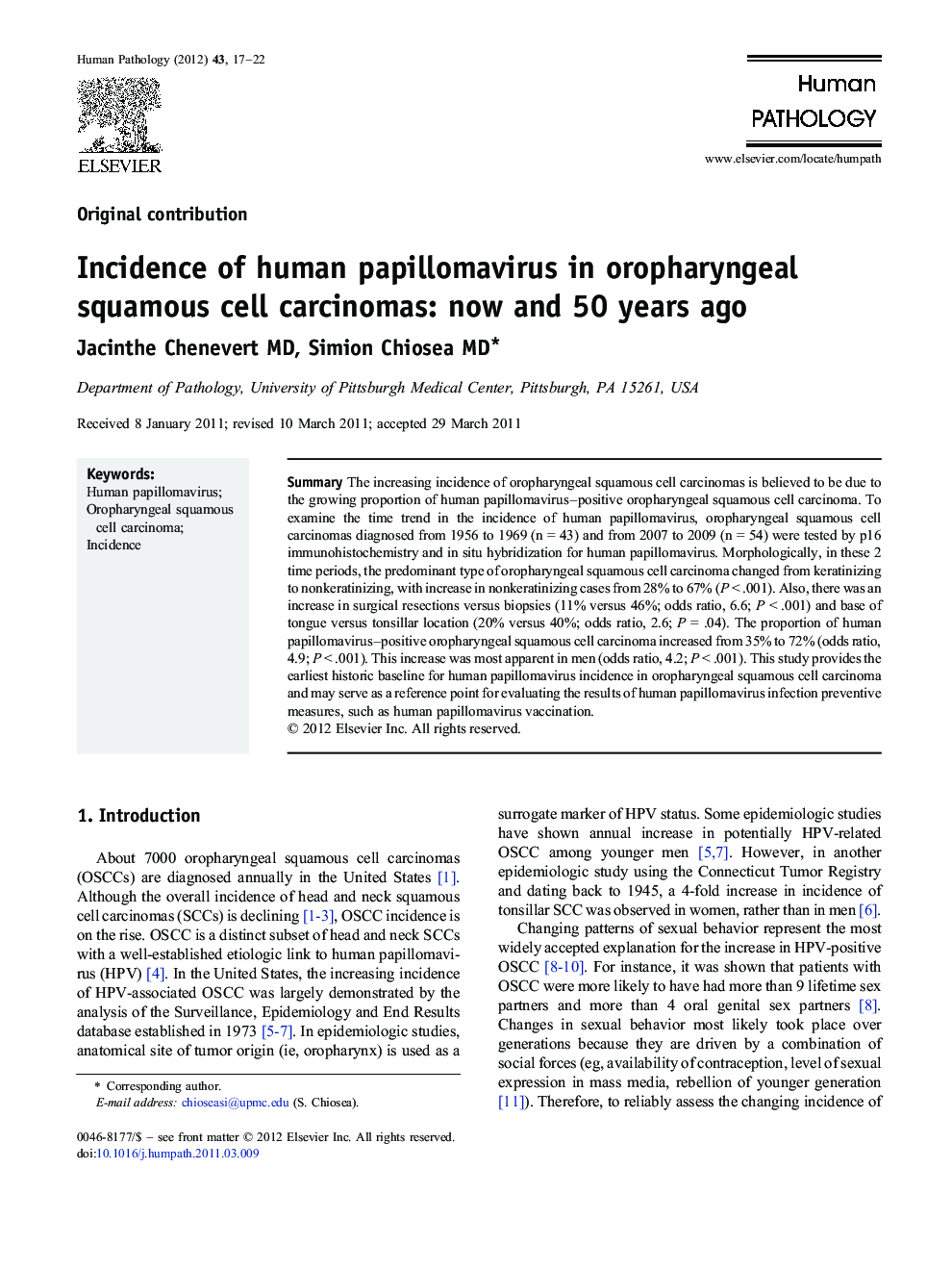| Article ID | Journal | Published Year | Pages | File Type |
|---|---|---|---|---|
| 4133742 | Human Pathology | 2012 | 6 Pages |
SummaryThe increasing incidence of oropharyngeal squamous cell carcinomas is believed to be due to the growing proportion of human papillomavirus–positive oropharyngeal squamous cell carcinoma. To examine the time trend in the incidence of human papillomavirus, oropharyngeal squamous cell carcinomas diagnosed from 1956 to 1969 (n = 43) and from 2007 to 2009 (n = 54) were tested by p16 immunohistochemistry and in situ hybridization for human papillomavirus. Morphologically, in these 2 time periods, the predominant type of oropharyngeal squamous cell carcinoma changed from keratinizing to nonkeratinizing, with increase in nonkeratinizing cases from 28% to 67% (P < .001). Also, there was an increase in surgical resections versus biopsies (11% versus 46%; odds ratio, 6.6; P < .001) and base of tongue versus tonsillar location (20% versus 40%; odds ratio, 2.6; P = .04). The proportion of human papillomavirus–positive oropharyngeal squamous cell carcinoma increased from 35% to 72% (odds ratio, 4.9; P < .001). This increase was most apparent in men (odds ratio, 4.2; P < .001). This study provides the earliest historic baseline for human papillomavirus incidence in oropharyngeal squamous cell carcinoma and may serve as a reference point for evaluating the results of human papillomavirus infection preventive measures, such as human papillomavirus vaccination.
